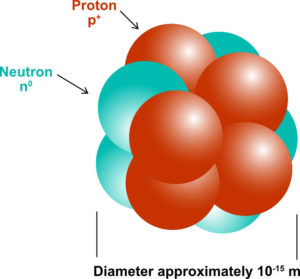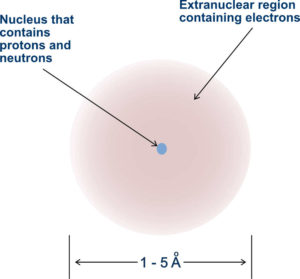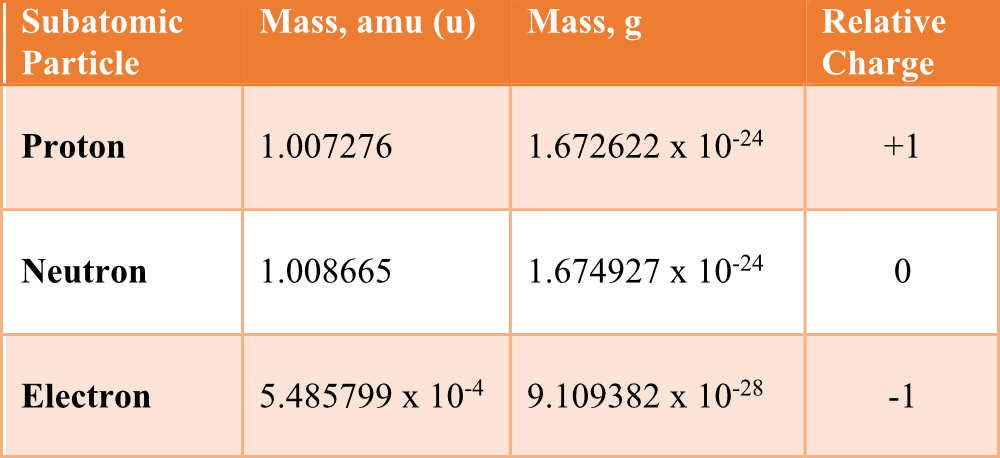An atom is the smallest particle of an element that retains the characteristics of that element. Atoms are made up of subatomic particles: electrons, protons, and neutrons. The neutrons and protons are located in the dense nuclear region of the atom while the electrons are in the extranuclear region of the atom. The protons have a positive charge while the neutrons are not charged–they are neutral. We can represent the protons as p+, electrons as e–, and the neutrons as n0.
The negatively charged electrons, e–, are located in the extranuclear region. The volume occupied by the electrons is approximately 10-10 meters. The majority of the atom’s mass is in the densely packed nucleus. In a neutral atom, the number of protons is equivalent to the number of electrons. As you can see in the figure below, the majority of the atom’s volume is due to the electrons. This is because electrons are negatively charged and repel one another. The more electrons in an atom, the larger the volume or size of the atom.
Recall, one Angstrom, Å, is equal to 10-10 meters. As stated earlier, the majority of the atom’s mass is in the nucleus. In the table below, are the masses and relative charges of the subatomic particles–protons, electrons, and neutrons.
The charge on a proton is +1.602176 x 10-19 Coulombs, C. The charge on an electron is -1.602176 x 10-19 Coulombs, C. We use a relative charge of +1 and -1 for protons and electrons, respectively. Both the proton and neutron have similar masses in both amu (atomic mass units) and in grams. The electron has a much lighter mass of 5.485 x 10-4 amu or 9.109382 x 10-28 grams. Again, the nucleus contains essentially all of the mass of the atom.
Take a quiz on Atomic Structure by clicking the link below.
Atomic Structure Quiz
Back to General Chemistry 1 Study Guides
Back to Home Page



